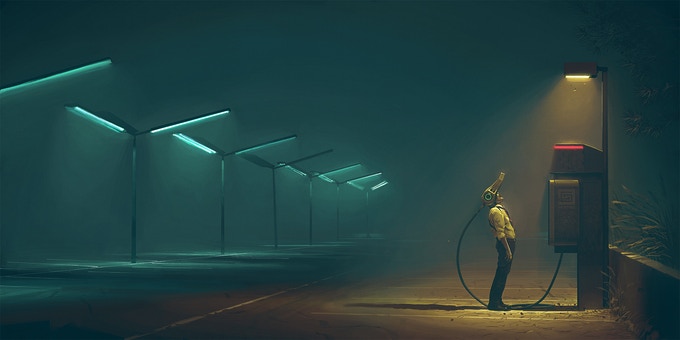To be a Mother is to suffer;
To travail in the dark,
stretched and torn,
exposed in half-naked humiliation,
subjected to indignities
for the sake of new life.
To be a Mother is to say,
“This is my body, broken for you,”
And, in the next instant, in response to the created’s primal hunger,
“This is my body, take and eat.”
To be a Mother is to self-empty,
To neither slumber nor sleep,
so attuned You are to cries in the night—
Offering the comfort of Yourself,
and assurances of “I’m here.”
To be a Mother is to weep
over the fighting and exclusions and wounds
your children inflict on one another;
To long for reconciliation and brotherly love
and—when all is said and done—
To gather all parties, the offender and the offended,
into the folds of your embrace
and to whisper in their ears
that they are Beloved.
To be a mother is to be vulnerable—
To be misunderstood,
Railed against,
Blamed
For the heartaches of the bewildered children
who don’t know where else to cast
the angst they feel
over their own existence
in this perplexing universe
To be a mother is to hoist onto your hips those on whom your image is imprinted,
bearing the burden of their weight,
rejoicing in their returned affection,
delighting in their wonder,
bleeding in the presence of their pain.
To be a mother is to be accused of sentimentality one moment,
And injustice the next.
To be the Receiver of endless demands,
Absorber of perpetual complaints,
Reckoner of bottomless needs.
To be a mother is to be an artist;
A keeper of memories past,
Weaver of stories untold,
Visionary of lives looming ahead.
To be a mother is to be the first voice listened to,
And the first disregarded;
To be a Mender of broken creations,
And Comforter of the distraught children
whose hands wrought them.
To be a mother is to be a Touchstone
and the Source,
Bestower of names,
Influencer of identities;
Life giver,
Life shaper,
Empath,
Healer,
and
Original Love.
- Allison Woodard
Yet, when we think of Power, we emulate the father
When we think of Strength, we look to our dads
and envision God with a penis.
Yesterday I posted a few thoughts on boxes. Then, this morning, while walking to work, the podcast God our Mother took those simple thoughts, doused them with gasoline, and then, with the smirk of deep understanding, sent a spark flying through the barren darkness.
When the box exploded, I had to step back, almost
run
Because the flames that licked and snapped and grew in the darkness
scared me.
And the box was gone.
To Be a Mother is perhaps unfair and probably incomplete
but no more so than the decades and decades and decades of thought
on the father.
And we've swallowed and followed those
like wine and bread
and must-covered hymnals
all the way
to war.
To Be a Mother is perhaps unfair and probably incomplete
because how does one define a mother?
Simply?
Succinctly?
Fully?
Like God.
Who oversees the dirt and molds the clay
into the perfect and complete image
of Them.
He and She
Both and They
Strong. Fierce. And ever more and equally God-
the Source,
Bestower of names,
Influencer of identities;
Life giver,
Life shaper,
Empath,
Healer,
and
Original Love.
The box slayer.
For more on . . .
-N- Stuff : Open Thoughts : Other Inspiring Podcasts
BE SURE TO SCROLL DOWN AND SUBSCRIBE - THANKS FOR READING!




















